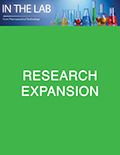GigaGen Highlights Research Describing New Class of Drugs for Potential COVID-19 Therapy
In the study, GigaGen presents a novel technology for producing a new class of drug, recombinant hyperimmunes, that may potentially generate new COVID-19 therapies.
GigaGen, a US-based biotechnology company specializing in antibody drugs for infectious diseases, transplant rejection, and checkpoint resistant cancers, submitted a new study, “Capturing and Recreating Diverse Antibody Repertoires as Multivalent Recombinant Polyclonal Antibody Drugs,” to bioRxiv, an online archive and distribution service, in which the company presents a novel technology for producing a new class of drug, which it has named "recombinant hyperimmunes," according to an Aug. 10, 2020 press release.
New data generated in GigaGen's study highlights the new class of drugs, which are polyclonal antibodies (recombinant hyperimmunes) that comprise thousands to tens of thousands of antibodies derived from donor B cells. The antibodies are produced recombinantly at large scale in mammalian cells.
The starting material for these polyclonal antibodies stems from convalescent serum. Convalescent serum therapies are being touted as a unique and viable approach to addressing the ongoing COVID-19 pandemic. Because these serum therapies comprise tens of thousands of antibodies, they have polyvalent activity against multiple drug targets and epitopes, which may improve clinical efficacy while taking advantage of in-vivo affinity maturation of the antibodies in the donors' immune systems. The system is modeled after other plasma-derived drugs, such as intravenous immunoglobulin (IVIG) and anti-thymocyte globulin (ATG), both currently used to treat significant patient populations worldwide.
Despite the promise these types of therapeutics hold, however, the drugs derived from blood fractions are difficult to manufacture consistently and at large scale. For example, in developing GigaGen’s potential drug candidate, GIGA-2050, the company's screen of 50 convalescent COVID-19 donors showed thousand-fold differences in anti-SARS CoV-2 titers. In addition, many donors are producing weak responses. This factor therefore significantly complicates the ability of convalescent serum manufacturers to acquire enough high-potency product to address the COVID-19 pandemic. The inconsistency seen in antibody responses to COVID-19 highlights the need to develop alternative therapeutic approaches in parallel to convalescent serum therapies, the company stated in the press release.
GIGA-2050 for treating COVID-19 has a similar result to recombinant convalescent serum, which combines the advantages of recombinant antibodies (e.g., purity, consistency, and potency) with the advantages of plasma-derived antibodies (e.g., proven efficacy, diversity, polyvalence, and in-vivo affinity maturation). GigaGen can produce millions of doses of drug using the new technology proposed in its study and without the need to recruit more convalescent donors.
Key results of the study include:
- Successful demonstration of consistent production of the GIGA-2050 drug candidate, which is a mixture of 12,500 anti-coronavirus antibodies
- Greater IgG purity demonstrated by GIGA-2050 compared to other reference plasma-derived drugs
- One hundred times more protective attributes by GIGA-2050 versus high-titer COVID-19 convalescent plasma using SARS CoV-2 live virus neutralization assays
- Potential for broad efficacy with GIGA-2050 because it binds to a variety of natural SARS CoV-2 variants in addition to its predecessor, SARS CoV
Beyond the use of recombinant hyperimmunes for treating COVID-19, the study data also suggested that this class of drug may have broad applicability through proofs-of-concept for a Zika hyperimmune therapy without the risk of antibody-dependent enhancement in? a high-potency spike-in mixture for primary immune deficiency, and a recombinant version of anti-human T-lymphocyte immunoglobulin for transplant tolerance.
“Our approach only requires a few donors to generate enough product to treat millions of people. No other company on Earth has the technology to produce this kind of drug. We still don't know whether vaccines and monoclonal antibodies will fail to prevent serious COVID-19, so our technology fills a critical niche to address the risk of a further escalating pandemic,” said David Johnson, PhD, co-founder and CEO of GigaGen, in the press release.
Source: GigaGen

Drug Solutions Podcast: A Closer Look at mRNA in Oncology and Vaccines
April 30th 2024In this episode fo the Drug Solutions Podcast, etherna’s vice-president of Technology and Innovation, Stefaan De Koker, discusses the merits and challenges of using mRNA as the foundation for therapeutics in oncology as well as for vaccines.
Entering New Domains for 3D Printing of Drug Products
April 6th 20253D printing of personalized medications is currently possible under existing compounding regulations, offering enhanced process control through automation. But new legislation coming in 2025 will allow 3D printing as part of a distributed manufacturing framework.